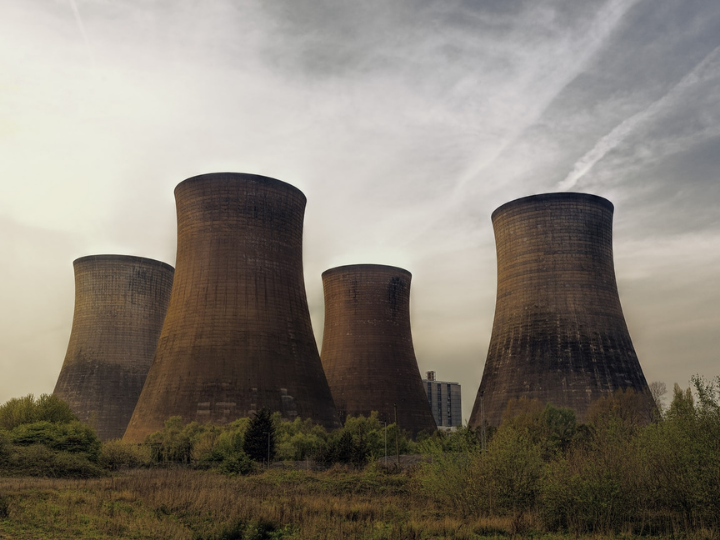by Nikolaus J. Kurmayer
As Europe rediscovers the merits of nuclear power as a low-carbon source of electricity, policymakers in Brussels are now looking to leverage the non-stop generation of atomic energy to ramp up the production of low-carbon hydrogen.
Hydrogen is expected to play a key role in decarbonising process industries like steel and chemicals, which cannot fully electrify. The European Commission estimates that 24% of global energy consumption in 2050 will come from hydrogen.
“Hydrogen can also provide services such as buffering and storage in a renewables-based electricity system,” explained Ruud Kempener, policy officer at the European Commission’s energy directorate, who spoke at a EURACTIV event on 15 November.
However, almost all hydrogen produced in Europe today is highly polluting. 96% is fossil-fuel based and carbon intensive, according to the European Commission, which published a strategy last year putting the emphasis on “green” hydrogen coming from renewable electricity.
And until renewables are deployed at scale, “the very nascent market needs other forms of low-carbon hydrogen to replace fossil-based hydrogen,” Kempener said, citing “low-carbon hydrogen produced from natural gas with carbon capture and storage or the production of hydrogen from low-carbon electricity, like nuclear power.”
Most hydrogen produced in Europe today comes from a process called steam methane reforming, based on fossil gas. When used in combination with carbon capture and storage, the resulting hydrogen is called “blue” and is considered low-carbon.
But the climate credentials of blue hydrogen have recently been called into question because of potential methane leakage coming from gas infrastructure.
In December, the European Commission will publish proposals to decarbonise the EU gas market, including new legislation to curb methane leaks along the supply chain and a certification system to ascertain the carbon footprint of gases such as hydrogen.
On the other hand, so-called “purple” or “pink” hydrogen made from nuclear energy has yet to be regulated at EU level, said Dutch EU lawmaker Bart Groothuis who also spoke at the EURACTIV event.
Nor did the EU’s 2020 hydrogen strategy explicitly mention nuclear electricity as a potential low-carbon source of hydrogen, an omission that was later rectified by the European Commission.
“I do believe that we need new forms of low-carbon electricity to produce hydrogen,” Groothuis added, citing “low-carbon hydrogen coming from nuclear power plants”.
“From a political standpoint it may not be perfect, but it is best. And I don’t want perfect to be the enemy of the good.”
His comments in support of nuclear-based hydrogen come at a time when European countries are rediscovering the merits of nuclear power as a low-carbon source of energy.
In October, both Sweden and the Netherlands came out in favour of nuclear power during an extraordinary meeting of EU energy ministers convened in response to the energy price crisis.
“Sweden believes that we will need all cost-effective fossil-free solutions, including bioenergy and nuclear, that contribute to the EU’s climate targets and to cut our dependency on fossil fuels,” said Anders Ygeman, the Swedish energy minister.
Speaking at the same meeting, his Dutch counterpart, Stef Blok, spoke in favour of including nuclear energy in the bloc’s green finance rules.
Probably the biggest advantage of nuclear power is the constant, stable source of power it provides to the electricity grid.
“Connecting large electrolysers to the grid” will be key to produce enough carbon-free hydrogen to supply the industries that need it, said Rasa Engstedt, energy counsellor at the Swedish permanent representation in Brussels.
In August, Swedish steelmaker SSAB became the first in the world to produce carbon-free steel using hydrogen coming from renewable electricity.
But even though Sweden aims to reach 100% renewable power by 2045, the country still gets 39% of its electricity from nuclear, Engstedt remarked.
“For us, the most important is that all fossil-free electricity should be abled to be used for hydrogen production from electrolysers,” said Engstedt, who also spoke at the EURACTIV event.
Competitiveness of “purple” hydrogen
The EU has yet to recognise hydrogen produced from nuclear power. So-called “purple” hydrogen faces another obstacle: nuclear electricity is more expensive than renewables like solar and onshore wind, which are currently the cheapest on the market.
To be cost-competitive, “your electricity sourcing price is the most important thing,” explained Christelle Rouille, CEO of EDF hydrogen subsidiary Hynamics.
In theory, that makes purple hydrogen less competitive than green hydrogen. But purple hydrogen possesses a distinct advantage: nuclear power provides a near constant stream of energy, allowing electrolysers to run around the clock when renewable energies are variable.
In member states where the electricity is very low carbon, like France and Sweden, “grid connected electrolysers could contribute to decrease the cost of hydrogen,” said Rouille.
“This allows electrolysers to produce Hydrogen during a very high number of hours per year,” she added, noting that generating a reliable supply of hydrogen is “very important” to industrial customers. Producing hydrogen from the grid also cuts down on transport costs, she noted.
And in the longer term, so-called small modular reactors could bring down the price for nuclear electricity, said Groothuis. “I think we have not seen the end of the cost effectiveness of creating energy production from nuclear plants,” the Dutch lawmaker said.
Either way, producing hydrogen from nuclear power at scale is likely to require significant investments in additional nuclear reactors.
A May 2021 report by the French parliamentary office for the evaluation of scientific and technological choices (OPECST) found that producing hydrogen for France alone would require “the equivalent of four nuclear power stations dedicated solely to the production of electricity”.
Globally, “the path towards low-carbon hydrogen from nuclear electricity would represent 400 new 1 GW nuclear reactors,” said the authors of the report.
*first published in: www.euractiv.com




 By: N. Peter Kramer
By: N. Peter Kramer
